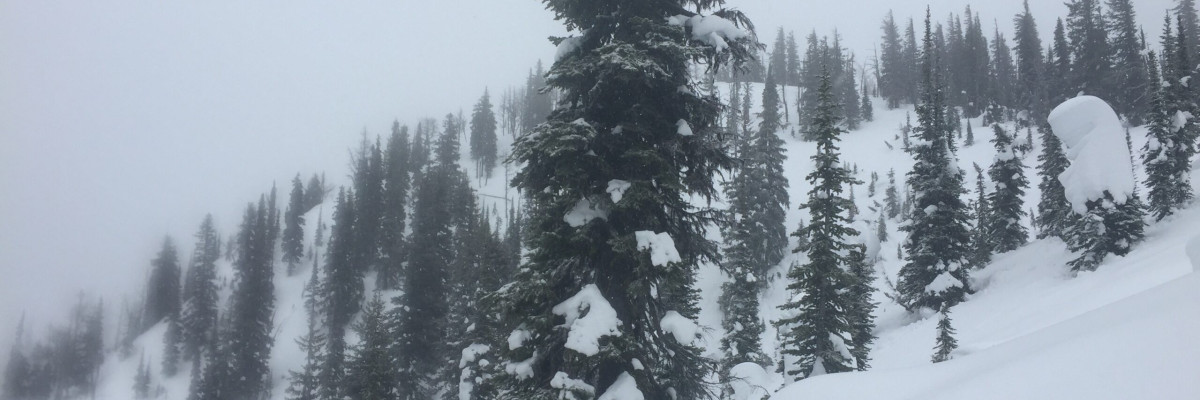The current avalanche danger is LOW for the west central Montana backcountry. Human triggered avalanches are still possible in isolated terrain. If we get more snow then predicted expect the avalanche danger to increase.
Good morning, this is Travis Craft with the West Central Montana Avalanche Center’s avalanche advisory for January 19, 2017. This danger rating does not apply to operating ski areas, expires at midnight tonight and is the sole responsibility of the U.S. Forest Service.
Weather and Snowpack
Mountain temperatures range from 24 F to 35 F in the region. Winds are 13 mph out of the SE in the Bitterroot. Point Six, in the northern part of the advisory area, winds are reading 16 mph with gusts of 24 mph out of the WSW. The forecast area received 0 to 1 inches of new snow in the last 24 hours. The new snow had SWE’s ranging from 0 to .2 inches of water.
Tim and I took the sleds to the central Bitterroot yesterday, near Elk Meadows. Logan was in the Rattlesnake. We observed active snow transport(video). The warm temperatures have helped to decrease the instabilities in the snowpack. We all saw small loose wet releases.
The primary concern is small wind slabs. These formed on leeward terrain and should be relatively shallow due to the limited amount of snow available for transport.
The second avalanche problem is persistent slabs. There are two layers (1.) 2 feet from the surface of near surface facets and (2.) the basal facets on the ground. We have not had propagation on the two layers of concern for the past week. Dig a pit and see if these layers are reactive. If the mountains receive more heavy wet snow than predicted, expect these layers to become more sensitive to triggers.
The last avalanche concern is loose wet releases. We all observed roller balls on slopes later in the day. These show us the snow surface is getting warm. If you see rollerballs or small point releases on the slope, move to a more shaded aspect, and avoid terrain traps.
Avalanche and Weather Outlook.
Snow accumulations are predicted to be low, less than an inch. Warm temperatures will continue through tonight, and then a cold air mass will move in. The avalanche danger will remain the same with these conditions. If we get a large new load of snow on the layers, expect the avalanche danger to increase.
We have been getting a lot of public observations, thank you. If you are out in the backcountry, please send us what you saw, these are very helpful in producing the advisory.
Logan will issue the next advisory on Saturday, January 21, 2017.
Ski and ride safe.














